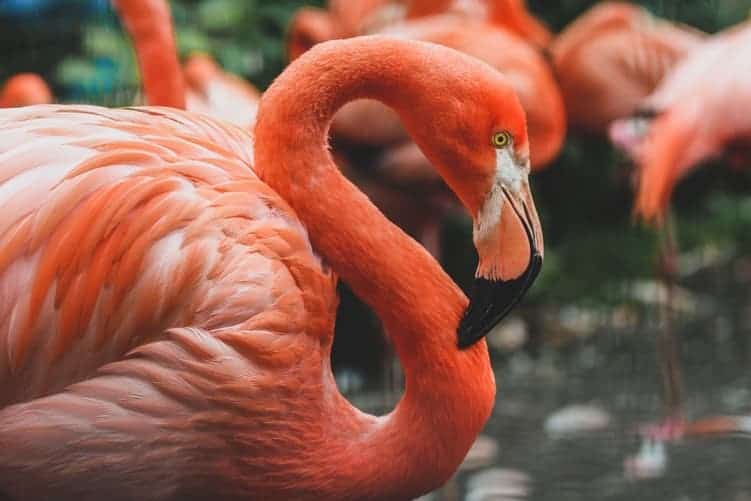
“You are what you eat” stands truer for flamingos than other species. Flamingos aren’t naturally pink, they take their distinctive hue from beta carotene — a pigment from the algae and invertebrates they eat.
Not all flamingos are equally pink — the ones that have the most intense color tend to have the richest diet, and therefore tend to be in better health.
According to a new study, the healthier and pinkest flamingos like to take advantage of their health to push others around. They are more likely to get aggressive and fight for food, using their superior status as an advantage.
“Flamingos live in large groups with complex social structures,” said Dr. Paul Rose, of the University of Exeter, author of the new study.
“Color plays an important role in this. The color comes from carotenoids in their food, which for lesser flamingos is mostly algae that they filter from the water. A healthy flamingo that is an efficient feeder—demonstrated by its colorful feathers—will have more time and energy to be aggressive and dominant when feeding.”
Dr. Rose studied the behavior of lesser flamingos in the Slimbridge Wetland Reservation, in the southern UK. The color of the birds was scored from one (whitest) to four (pinkest) in an attempt to discover behavior patterns.
The flamingos are cared for in the reservation, and their behavior was tracked in different feeding situations: at an indoor feeding bowl, a larger indoor feeding pool, and outdoors with food available in a large pool. In the outdoor pool, birds spent less time being aggressive and more time foraging, compared to when they were fed from a bowl. No difference was observed between males and females.
This offers an insight into flamingo behavior, and also has important implications for captive birds, suggesting that when possible, it’s preferable to feed them over larger surfaces. Small and simple changes could bring significant improvements to the animals.
“When birds have to crowd together to get their food, they squabble more and therefore spend less time feeding,” Dr. Rose said.
“It’s not always possible to feed these birds outdoors, as lesser flamingos only weigh about 2kg and are native to Africa, so captive birds in places like the UK would get too cold if they went outside in the winter.However, this study shows they should be fed over as wide an area as possible. Where possible, creating spacious outdoor feeding areas can encourage natural foraging patterns and reduce excess aggression.”
It’s possible that the behavior also has a sexual component, as hue intensity also plays a role in finding a mate.
Flamingos don’t have a breeding season, they can breed all year long. When individuals are ready to mate, they tend to exhibit a pinker flush, which turns white in the stages of parenthood. Flamingos might get a bit more aggressive in that period.
The study has been published in Ethology.





